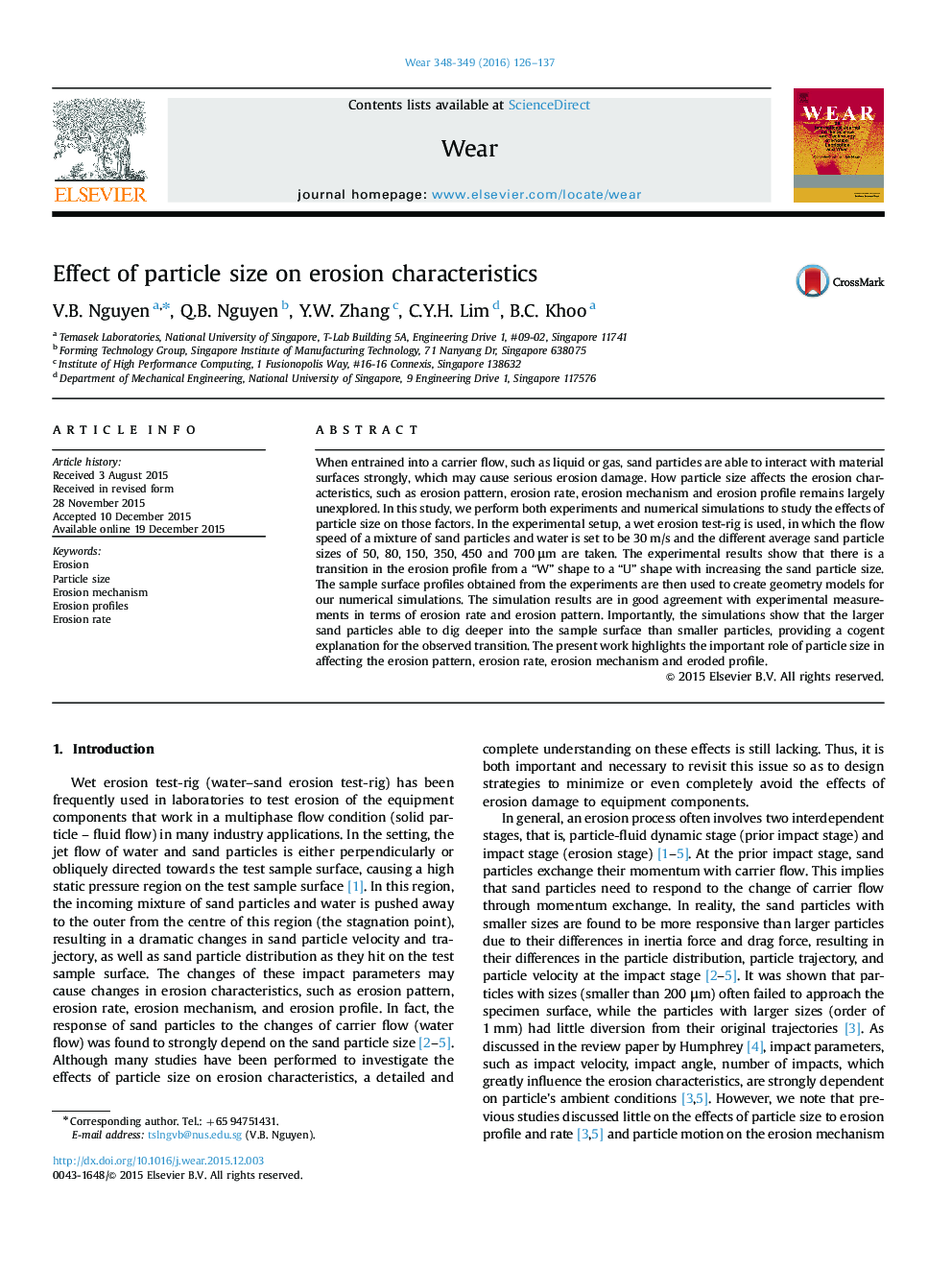| Article ID | Journal | Published Year | Pages | File Type |
|---|---|---|---|---|
| 616968 | Wear | 2016 | 12 Pages |
•A combined numerical-experimental method for study effects of particle size on erosion.•Smaller sand particle with smaller Stokes number responds to the fluid flow faster.•Erosion pattern and eroded depth are strongly influenced by the particle size.•Different particle size can cause different erosion mechanism and erosion rate.•Both eroded profiles, “U” and “W”, are found when particle size ranging from 50 to 700 μm.
When entrained into a carrier flow, such as liquid or gas, sand particles are able to interact with material surfaces strongly, which may cause serious erosion damage. How particle size affects the erosion characteristics, such as erosion pattern, erosion rate, erosion mechanism and erosion profile remains largely unexplored. In this study, we perform both experiments and numerical simulations to study the effects of particle size on those factors. In the experimental setup, a wet erosion test-rig is used, in which the flow speed of a mixture of sand particles and water is set to be 30 m/s and the different average sand particle sizes of 50, 80, 150, 350, 450 and 700 μm are taken. The experimental results show that there is a transition in the erosion profile from a “W” shape to a “U” shape with increasing the sand particle size. The sample surface profiles obtained from the experiments are then used to create geometry models for our numerical simulations. The simulation results are in good agreement with experimental measurements in terms of erosion rate and erosion pattern. Importantly, the simulations show that the larger sand particles able to dig deeper into the sample surface than smaller particles, providing a cogent explanation for the observed transition. The present work highlights the important role of particle size in affecting the erosion pattern, erosion rate, erosion mechanism and eroded profile.
Graphical abstractFigure optionsDownload full-size imageDownload high-quality image (340 K)Download as PowerPoint slide
